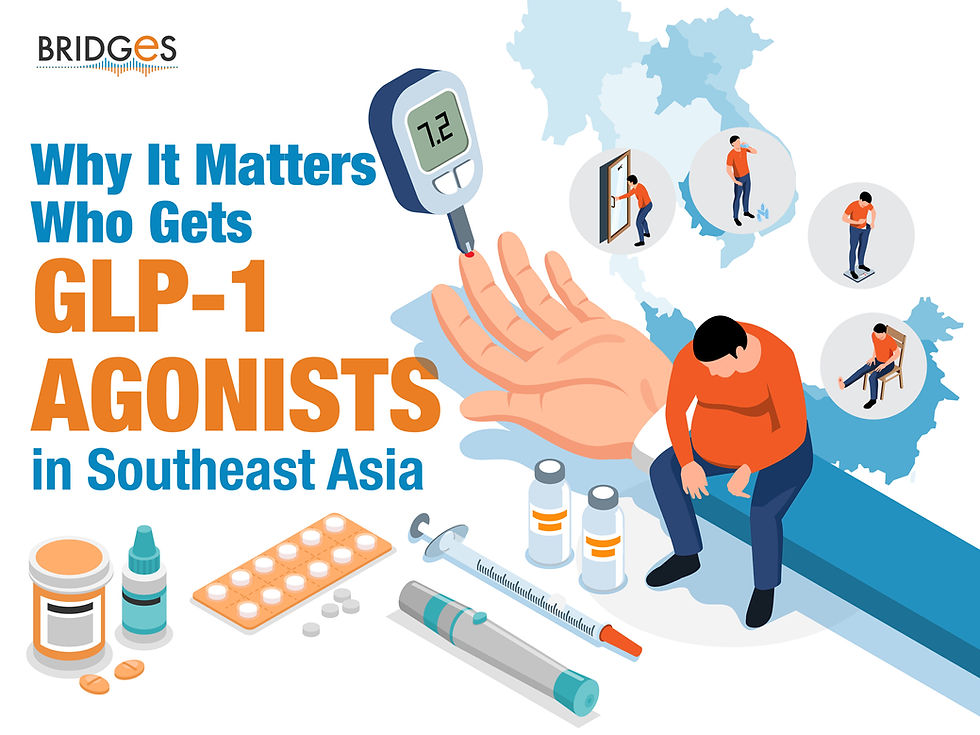What the Boom in Aesthetic Medicine Means for Young Doctors
- Bridges M&C team
- Nov 23, 2022
- 4 min read
Updated: Apr 9, 2023
The aesthetic medicine market in Asia-Pacific is poised for accelerated growth in the coming decade, so how can young physicians thrive amidst growing competition?

Despite the COVID-19 pandemic, the aesthetic medicine industry is still on its feet. A 2022 industry report by Graphical Research forecasts that the Asia Pacific aesthetic medicine market will exceed US$7.5 billion in revenue by 2027.
There appears to be a growing acceptance of cosmetic surgery and minimally-invasive procedures across Asia, from South Korea – where medical aesthetic procedures are common – to India, which has seen a surge in the popularity of aesthetic surgery and medical tourism in the last decade.
The 'Lipstick Effect' and shifting consumer perceptions
While the spread of COVID-19 hampered aesthetic medicine practices in the beginning, it also contributed to changing perceptions and increased acceptance of procedures. In what is known as “The Lipstick Effect”, where consumers tend to spend more on affordable luxury goods during times of crisis, the pent-up demand for dermal fillers and botulinum toxin injections rose during COVID-19, driven in part by the proliferation of video conferencing and the resulting “Zoom Effect”.
According to a McKinsey report, increased consumer purchasing power and shifting consumer attitudes about wellness, beauty, and healthy ageing have increased awareness and acceptance of aesthetic procedures, including injectables. Botulinum toxin injections which were once considered an 'extreme' anti-ageing treatment, are increasingly accepted as a normal and routine part of self-care and ageing.
As new indications and expanded formulations for products and procedures emerge, the industry is able to appeal to a wider range of potential patients such as men and millenials, and the demand is expected to increase in countries with a growing ageing population such as Japan. Japan is currently contributing 38.4% of the world’s cosmetic procedures, with over 42% of its population projected to be 60 years old and above by 2050.
Standing out from the crowd
With rapid growth comes increased and more intense competition. In an industry that is already infamous for being highly competitive, what does the future hold for aesthetic medicine physicians, especially young upstarts? How can they hope to survive, leave alone thrive, amidst the growing competition?

Indonesia
“Indonesians have become increasingly accepting of aesthetic medicine procedures over the last five years,” says Dr Jane Inneke, dermatologist from the Youth & Beauty Clinic in Jakarta.
“In the past, the demand for procedures in Indonesia had been driven by older women who wanted to appear more Caucasian, i.e., have a narrower nose, a higher nose bridge and a more projected nose tip, but today’s patients are undergoing treatments mainly to rejuvenate and enhance their appearance so they look like a better version of themselves,” says Dr Inneke, who has been specialising in aesthetics medicine since 2018.
Dr Inneke believes young physicians should possess in-depth knowledge of facial anatomy, master the principles and mechanisms of energy-based devices, and understand how different chemical compounds in topical formulations impact different skin types and conditions.
“It's also crucial for young practitioners to undergo long-term training programmes or fellowships in aesthetic medicine if they want to specialise in the field as it exposes you to mentorship opportunities under the industry’s foremost experts,” adds Dr Inneke.

Hong Kong
When COVID-19 descended upon the world, the upward trajectory of the aesthetic medicine industry in Hong Kong was knocked off course. China’s zero-COVID policy and mandated closing of non-essential services led to 50,000 people from the beauty industry losing their jobs, being put on furlough, and/or suffering severe financial losses.
Dr Vam Cheng, a distributor of energy-based devices and injectables in Hong Kong for the past 20 years, notes that this has led to pent-up demand by consumers who are eager to resume treatments after a long hiatus.
“The reopening of aesthetic medicine practices and more people becoming more accepting of such treatments bodes well for the industry. Young practitioners who lost out on clinical exposure and opportunities to practice on patients will now be able to practice a wider range of procedures, especially if they are part of an established aesthetic practice,” says Dr Cheng.
“Young practitioners should aim to master different types of entry-level treatments if they want to thrive in this industry, not just the most popular ones,” he advises.
He also believes more aesthetic physicians in Hong Kong should capitalise on social media marketing to raise awareness among the public about the safety and efficacy of aesthetic procedures, as the acceptance rate for such procedures in Hong Kong is currently low, at just 3% to 8%.

Taiwan
Dr Celine Chuang, consultant dermatologist from the DRX Dermatology Clinic in Taipei is an advocate of content marketing on social media, but only if it is crafted with the intent of educating the public, as opposed to selling a specific treatment. “What drives the most online interaction and traffic to my practice are influencer-driven video posts in which I discuss my own skin problems and how I overcame them with certain treatments.”
"Even if young practitioners are unable to afford an experienced in-house team or an agency in the beginning, they can learn how to create, edit, and post photos and videos on their own. This is how I gained my foothold in content marketing," advises Dr Chuang.
“Regardless of what content you generate and what services you provide, be authentic, genuine, and transparent in your dealings with your patients," she shares. "In mature markets such as Taiwan, customers are more discerning and can easily see through the gimmicks. If you provide excellent service and stay true to your word, your patients will become loyal to you and refer others to you, which will in turn help you grow and establish your practice.”
Article is written by Bridges M&C Account Executive Mariel Chow and Account Director Hyma Haridas




Comments